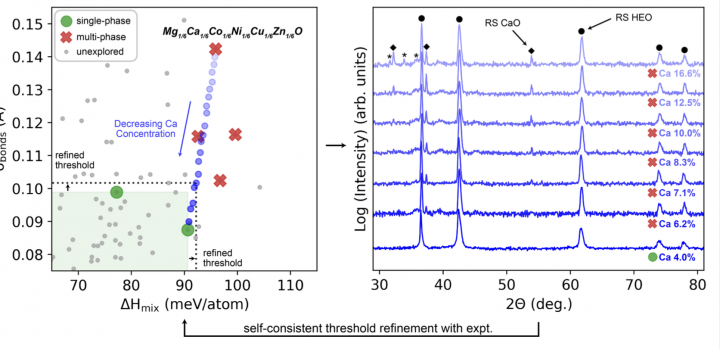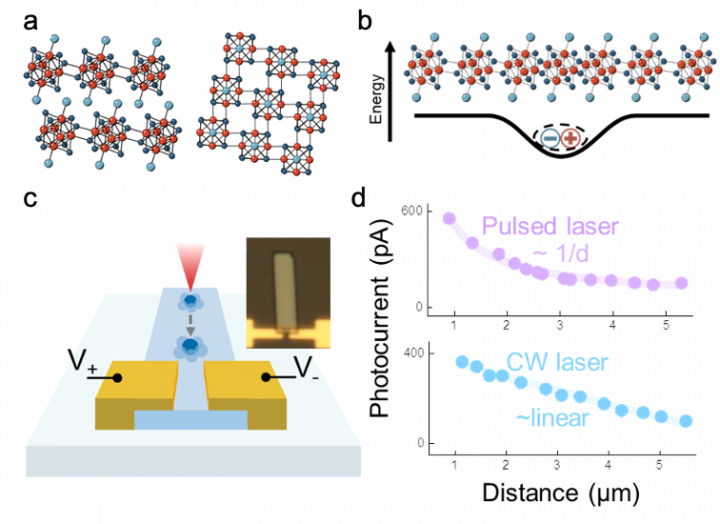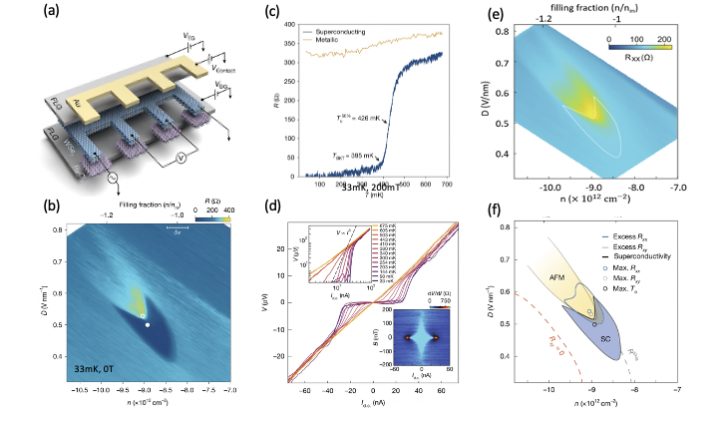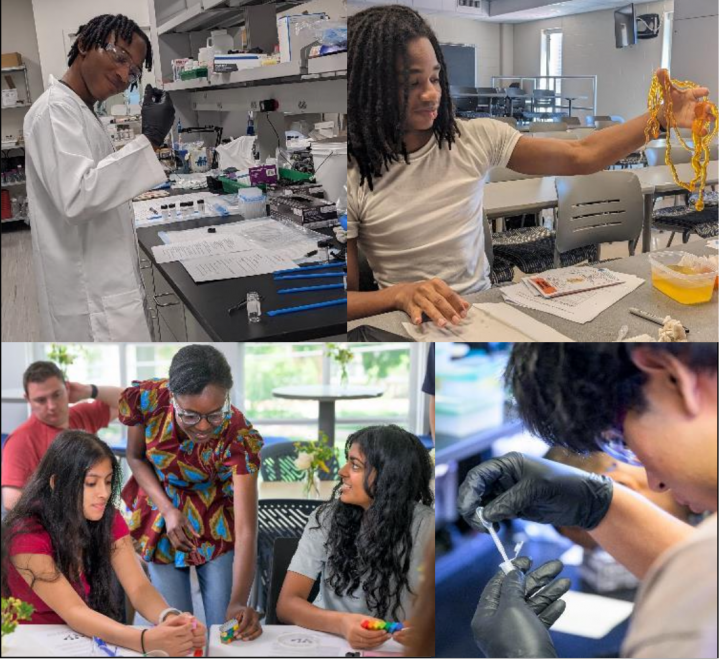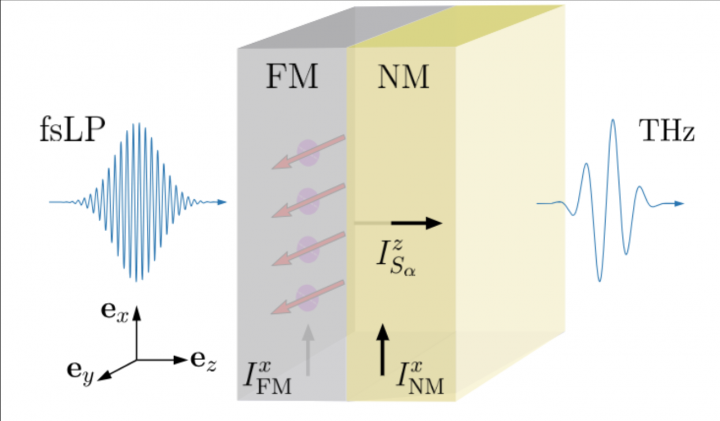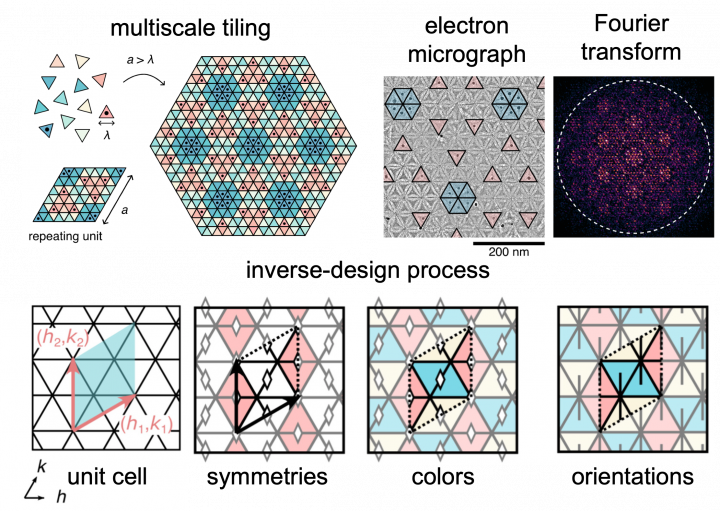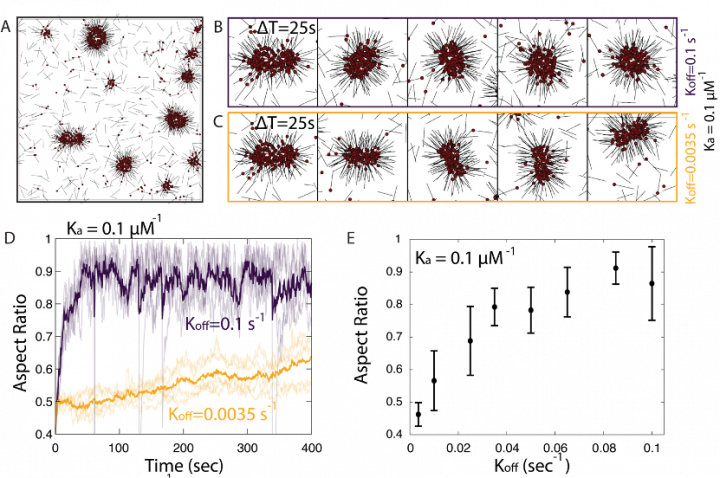High-entropy materials shift the traditional materials discovery paradigm to one that leverages disorder, enabling access to unique chemistries unreachable through enthalpy alone. A MRSEC team at Penn State University has developed a high-throughput framework for discovering and understanding the single-phase formation of high-entropy oxides by integrating computation and experiment in a self-consistent feedback loop. To more rapidly explore rock salt composition space, the team utilizes CHGNet machine-learning interatomic potentials with impressive accuracy even in disordered systems.

